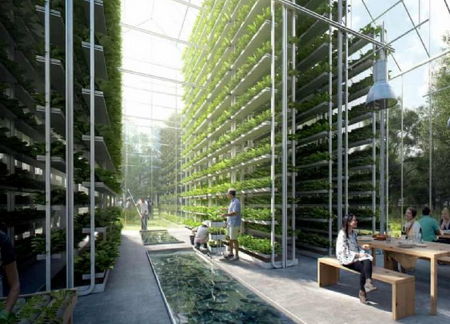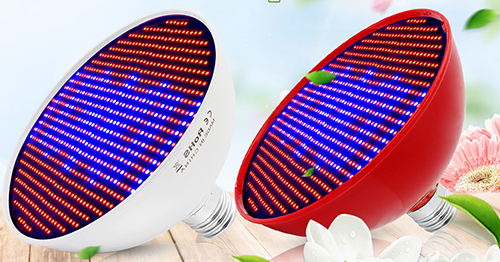The rapid growth of population and the trend of urbanization are expected to promote and promote the development and growth of the vertical farm industry. Vertical farms are thought to solve some of the problems of food production, but whether it can be a sustainable solution for food production, experts believe that there are still challenges.

According to a UN survey, the global population will grow from the current 7.3 billion people to 8.5 billion in 2030 and 9.7 billion in 2050. FAO estimates that in order to meet and feed the population of 2050, food production will increase by 70% from 2007 levels, global cereal production must increase from 2.1 billion tons to 3 billion tons by 2050, and meat needs to be doubled to 470 million tons.
How to solve the problem of demand due to the increase in population? Many people point out that adjusting and adding more land as agricultural production is not always possible in some countries. For example, the United Kingdom has used 72% of the land to produce the most agricultural products, but still needs to import food. The United Kingdom has also tried to use other methods for farming, such as the use of air defense tunnels left over from World War II combined with full-spectrum LED grow lights for greenhouse cultivation. The sponsors also plan to expand the planting range in 2019.
《Does The Full Spectrum Grow Lights Cause Harm To Humans?》
《Is The LED Grow Lights Really Useful?》
《Can Be Eaten The Vegetables Which Grows With The LED Grow Lights》
On the other hand, water use is also a barrier to food production. About 70% of OECD's water use is for farms. Climate change has also exacerbated production problems. Urbanization also requires food production systems to feed the population of urban populations with less labor, limited land and water resources in the countryside. These issues are driving the development of vertical farms and high-quality plant lights.

The low-use nature of vertical farms will provide opportunities for agricultural production to enter the city, closer to urban consumers, reduce the distance from farms to consumers, and shorten the entire supply chain. Urban consumers will be more interested in Food sources and easier access to fresh nutritious production. In the past, urban people did not have easy access to healthy fresh food. Vertical farms could be built directly in the kitchen or in their backyard, using the light provided by LED growing lights, which would be the most important message conveyed by vertical farm development.
In addition, the adoption of a vertical farm model will have a wide-ranging impact on traditional agricultural supply chains, and the use of traditional agricultural drugs such as synthetic fertilizers, pesticides, and herbicides will be significantly reduced. On the other hand, the demand for HVAC systems and control systems will increase to maintain optimal conditions for climate river management, special LED lighting for simulating sunlight, and other equipment to set up indoors or Outdoor architecture.
For vertical farm development, the Internet of Things (IoT) technology will also play an important role in recording plant growth data, crop harvesting will be traceable, and monitored elsewhere by computer or mobile phone.
In fact, vertical farms can produce more food with less land and water, and away from harmful chemical fertilizers and pesticides. However, shelves stacked indoors require more energy than traditional agriculture. Even if there are windows in the room, artificial light is usually required for other restrictions. Climate control systems provide the best growth environment, but they are also quite energy intensive.
According to the statistics of the British Ministry of Agriculture, lettuce is grown in the greenhouse, and it is estimated that about 250 kWh (kWh) of energy per square meter of planting area per year. According to the relevant collaborative research of the German DLR Research Center, the vertical farms in the same size planting area require an amazing energy consumption of 3,500 kWh per year. Therefore, how to improve acceptable energy use will be an important issue for the future development of vertical farm technology.
However, we believe that with the continuous upgrading of technology, the development of vertical farms will gradually meet the human needs for food, and the development of LED plant lights will also allow agricultural production to enter the city so that humans can enjoy greener foods that are healthier and more environmentally friendly.
《How To Build A Successful Plant Factory?》
《The Analysis of Vertical Farm Development Prospect》


According to a UN survey, the global population will grow from the current 7.3 billion people to 8.5 billion in 2030 and 9.7 billion in 2050. FAO estimates that in order to meet and feed the population of 2050, food production will increase by 70% from 2007 levels, global cereal production must increase from 2.1 billion tons to 3 billion tons by 2050, and meat needs to be doubled to 470 million tons.
How to solve the problem of demand due to the increase in population? Many people point out that adjusting and adding more land as agricultural production is not always possible in some countries. For example, the United Kingdom has used 72% of the land to produce the most agricultural products, but still needs to import food. The United Kingdom has also tried to use other methods for farming, such as the use of air defense tunnels left over from World War II combined with full-spectrum LED grow lights for greenhouse cultivation. The sponsors also plan to expand the planting range in 2019.
《Does The Full Spectrum Grow Lights Cause Harm To Humans?》
《Is The LED Grow Lights Really Useful?》
《Can Be Eaten The Vegetables Which Grows With The LED Grow Lights》
On the other hand, water use is also a barrier to food production. About 70% of OECD's water use is for farms. Climate change has also exacerbated production problems. Urbanization also requires food production systems to feed the population of urban populations with less labor, limited land and water resources in the countryside. These issues are driving the development of vertical farms and high-quality plant lights.

The low-use nature of vertical farms will provide opportunities for agricultural production to enter the city, closer to urban consumers, reduce the distance from farms to consumers, and shorten the entire supply chain. Urban consumers will be more interested in Food sources and easier access to fresh nutritious production. In the past, urban people did not have easy access to healthy fresh food. Vertical farms could be built directly in the kitchen or in their backyard, using the light provided by LED growing lights, which would be the most important message conveyed by vertical farm development.
In addition, the adoption of a vertical farm model will have a wide-ranging impact on traditional agricultural supply chains, and the use of traditional agricultural drugs such as synthetic fertilizers, pesticides, and herbicides will be significantly reduced. On the other hand, the demand for HVAC systems and control systems will increase to maintain optimal conditions for climate river management, special LED lighting for simulating sunlight, and other equipment to set up indoors or Outdoor architecture.
For vertical farm development, the Internet of Things (IoT) technology will also play an important role in recording plant growth data, crop harvesting will be traceable, and monitored elsewhere by computer or mobile phone.
In fact, vertical farms can produce more food with less land and water, and away from harmful chemical fertilizers and pesticides. However, shelves stacked indoors require more energy than traditional agriculture. Even if there are windows in the room, artificial light is usually required for other restrictions. Climate control systems provide the best growth environment, but they are also quite energy intensive.
According to the statistics of the British Ministry of Agriculture, lettuce is grown in the greenhouse, and it is estimated that about 250 kWh (kWh) of energy per square meter of planting area per year. According to the relevant collaborative research of the German DLR Research Center, the vertical farms in the same size planting area require an amazing energy consumption of 3,500 kWh per year. Therefore, how to improve acceptable energy use will be an important issue for the future development of vertical farm technology.
However, we believe that with the continuous upgrading of technology, the development of vertical farms will gradually meet the human needs for food, and the development of LED plant lights will also allow agricultural production to enter the city so that humans can enjoy greener foods that are healthier and more environmentally friendly.
《How To Build A Successful Plant Factory?》
《The Analysis of Vertical Farm Development Prospect》

没有评论:
发表评论